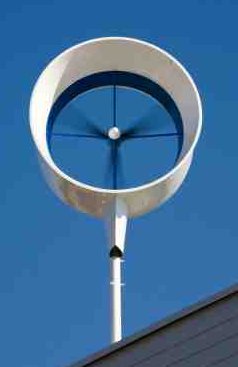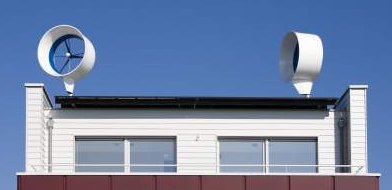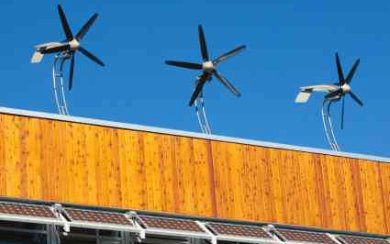- Home
- Home Energy
- Residential Wind Turbine
Residential Wind Turbine
Harvest Energy At Home!
The residential wind turbine has been slower to get off the mark than
the solar panel. This in spite of the fact that wind power has about a quarter of the carbon footprint of solar panels.

Part of this has been due to tax incentives linked with each technology. Near the end of 2008 the US established 30% tax credits for home wind initiatives. Following this the uptake boomed.
With places like Denmark and other European countries being at the forefront of wind turbine supply for commercial applications, in the US manufacturers have benefitted from the home market.
An advantage of the microturbines required for home use is that they need less wind to begin turning than their commercial cousins.
Being smaller they generate less power. Small wind turbines are defined as producing less that 100 kilowatts per hour, usually less than ten, with quite a number generating more like 1.5kW/hr.
So for most homes more than one of the smallest type would be necessary.
Many utilisers supplement wind microgeneration with solar alternatives. And other power is needed when neither wind nor sun is available.
Siting Considerations For A Residential Wind Turbine
The higher above the roof the turbine can be positioned the stronger the breeze will be. Wind speed increases at the seventh power above effective ground level.

And the more clear area about the house there is the more linear the flow will be. A clear half acre (2000sqm) or more of ground is ideal.
In spite of this, in larger built up areas where artificial canyons of buildings exist creating wind vortices from channeling of wind flow, this could be used.
Then there are aesthetic considerations of the projection above the roofline of the home turbine, effects from some light flickering on neighbours' properties, interference with views and possible noise.
Residential wind turbines that rely on gearing from the blades to drive the generator turbines can create noise - a concern in residential environments.

Possible Silent Turbines
One way to overcome this used by at least one company mentioned in Time magazine's article by Bryan Walsh in December 2010 on innovation, was to have the rotors tips composed of magnets and the wheel surround to have coiled copper wires. The wind blades become the generator.
This idea produces what is claimed as a silent turbine - produced by WindTronics, through Honeywell. With a 6 foot (1.8 metre) diameter size more than one could be placed above a house.
Unfortunately history has not been kind to this innovation. It is no longer available and Honeywell are not participating in this energy market.
Required Wind Speeds And Costs
A Skystream one, which works in winds down to 8mph (13kph), was quoted as around US$10,000 to give some idea of cost.
More recently a Latin American origin company has been successful in supplying cost effective units in South America. They have now entered to US market offering two variations on the vertical wind turbine.
The larger one, producing more energy, is designed to be grid-tied. The small unit is readily adaptable for off-grid situations. Either one can cut in at just 3mph (5kph), for US$3100 for the smaller and US$6400 for the larger unit.
Further descriptions, details, supply and ordering information are available on their website.
There are even newer developments on the horizon offering similar benefits and costs. I will add more as these come on-line.
As with any renewable energy that is intermittent either battery storage or alternative power sources need to be available .
A residential wind turbine offers free energy for those in areas with enough continuous wind supply and available roof-, or sky-, space to mount them effectively. Further research could produce even more innovative designs.
- Home
- Home Energy
- Residential Wind Turbine
New! Comments
Have your say about what you just read! Leave me a comment in the box below.